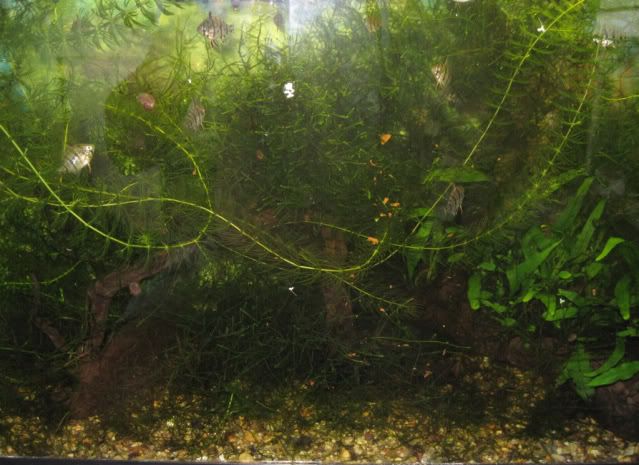You said "0.25 to 0.45 ppm". That's not a lot of nitrate at all. It takes about 30 ppm and above of nitrate for fish to start showing stress. I think maybe you had a typo? Did you mean 25 to 45 ppm? Because yes, 45 ppm might cause problems in the aquarium if that's the lowest concentration of nitrate possible out of the tap. I'm going to go look it up.
Edit:
I looked it up. "Nitrate levels in Toronto’s water are about 25 times lower than the provincial drinking water standards of 10 mg/L." from http://www.toronto.c...r_technical.pdf
Remember that the mg/L unit is roughly equivalent to a ppm. So that means that the Toronto tap water nitrate level is only 7.5 ppm, which is perfectly fine and not something I would worry about.
Do you mind buying a nitrate kit, testing your tap water and telling us what the ppm are? I'm curious.
Thanks to all for the excellent and quick responses.
My Bad! That's the problem with doing conversions from mg/l to ppm at 2 a.m. The nitrates are probably not the issue. The water report does not list the concentration of phosphates so that could be a contributing factor. I was a little too eager to blame the water partly because in the days I kept high-tech planted tanks I would notice algae kick start after a large water change.
With this new foray into native fish I thought I would be plenty busy (in a happy way) with fish collecting and didn't want the extra labor I know planted tanks entail. I do love the look though.
I still suspect that tap water in most big cities is not the best for our hobby. One problem with the chlorine/chloramine treatments in a bottle, is that they seem to completely confuse most test kits. The bottle warns of this but doesn't say how long this lasts after treatment. I bought a kit from a large retail chain when I started these tanks - hardness, ammonia, Nitrate, even PH all read bogus results, such as 0 hardness and a PH so low it could have been use for battery acid. I didn't bother getting another having rarely found testing necessary in the past but maybe I should get a better kit in case the "BIG" retailer was selling junk. Come to think of it this was the same shop that later sold me a nitrosomonas starter culture that had expired. Fortunately the horrible smell coming from the bottle stopped me just as I was going to put it in the tank. I'll pick up a new kit from a better shop and look for a phosphate test as well.
I also like plants as a filtration method but am hesitant to go that route with my time constraints. No use starting something I can't do a proper job of maintaining. I guess I may have to consider either going to "heavily planted" or "not planted". In a way I've been doing the worst of each approach. I have water lilies (growing well) and in addition have been trying to get Amazon frogbit to grow (barely survives) along with some Canadian Pond Weed (doing well, mostly floating). This was to give a nice pond feel, provide the broken light that make my pumpkinseed look amazing, and negate the need for adding CO2. Problem is the lights are bright enough and the water rich enough,apparently,to grow amazing bluish green algae.
I think I will: a) reduce light period to 8 or 9 hours from 12 b) improve quality of lighting with better plant specific tubes and perhaps reduce wattage c) see if I can determine what the tap is giving me in terms of phosphate. If that doesn't work it's "fish only". Hopefully I can find plastic plants to provide the broken shading I want. Another option is to get the water lilies to spread over most of the surface which is the look I want and light blocker to reduce algae.
About Prime, I was trying to find out what the chloramine/ammonia is CONVERTED TO by the sodium thio. It's a trade secret apparently, but I'm sure some of the people here must have chemistry knowledge to work it out. I suspect it is not as clear cut as the vendors make it sound - "a form of ammonia that the filter can handle". Handle how exactly? What happens to this "safe" ammonia with higher or lower PH?
Thanks again and sorry for the mistake.
P.S. Love the bog filter idea mywan. I wonder if any Riparium or paludarium owners use bog plants to filter the water?










